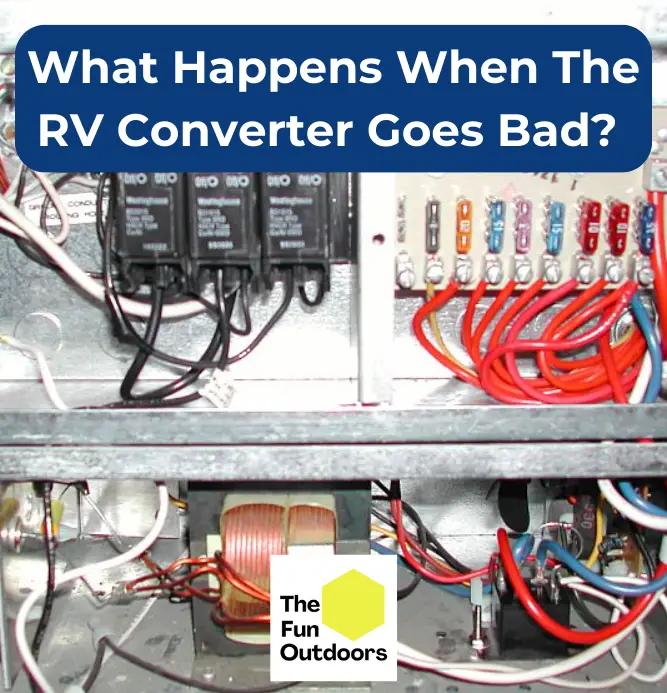As an RV owner, there are many parts to keep track of, and unfortunately, a lot of things that can go wrong. The converter is a crucial component in the electrical system of the RV, and its primary function is to convert power. So what happens when the RV converter goes bad?
If your RV converter is bad, you may experience flickering or dimming lights, power losses, electronic device malfunctions, onboard batteries that won’t hold a charge, and your RV refrigerator may struggle to maintain a consistent temperature. If you notice any of these signs, it is important to take action right away to prevent further damage to your RV’s electrical system.
In this article, we will explore what happens when an RV converter goes bad, how to tell if your RV converter is bad, and how to test an RV converter. We will also discuss the signs of a bad RV converter, why your RV converter may not be charging batteries, and troubleshooting steps you can take to fix common issues. Finally, we will provide tips for maintaining your RV converter and dealing with overheating.
Key Takeaways
- A bad RV converter can cause a variety of problems, including dimming lights, malfunctioning electronic devices, and a fridge that struggles to maintain a consistent temperature.
- Testing the RV converter is the best way to determine if it is working properly or if it needs to be replaced.
- Regular maintenance and troubleshooting can help prevent issues with your RV converter and keep your RV’s electrical system running smoothly.
How To Tell If Your RV Converter Is Bad
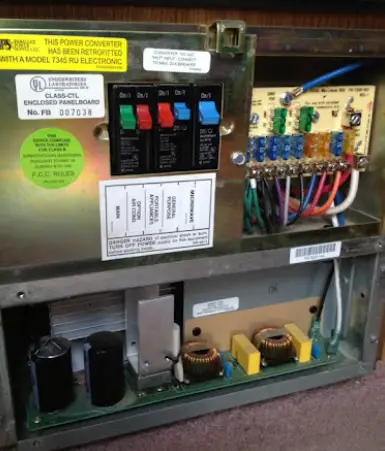
If you own an RV, it’s important to know how to tell if your RV converter is bad. A bad converter can cause a variety of issues, from dimming lights to a complete loss of power. Here are some symptoms to look out for:
See Related: What Does An RV Converter Do? And Where Is The Converter In My RV?
Symptom 1: Your Lights Are Dimming or Flickering
One of the most common signs of a bad RV converter is dimming or flickering lights. If you notice that your lights are not as bright as they used to be, or if they flicker when you turn on other appliances, it could be a sign that your converter is failing. This is because the converter is responsible for converting AC power to DC power, which is what your lights and other appliances run on.
Symptom 2: Your RV Onboard Batteries Won’t Hold A Charge
Another sign of a bad RV converter is that your onboard batteries won’t hold a charge. If your batteries are not holding a charge, it could be a sign that your converter is not charging them properly. This can be a serious problem, as you need your batteries to power your RV when you are not connected to a power source.
See Related: Will An RV Converter Work Without A Battery?
Symptom 3: Your Cooling Fan or Vents Aren’t Working As They Should
A bad RV converter can also cause issues with your cooling fan or vents. If your cooling fan is not working properly, it could be a sign that your converter is not cooling down properly. This can cause your converter to overheat, which can lead to further problems down the line. Additionally, if your vents are not working properly, it could be a sign that your converter is not distributing power properly.
How To Test An RV Converter
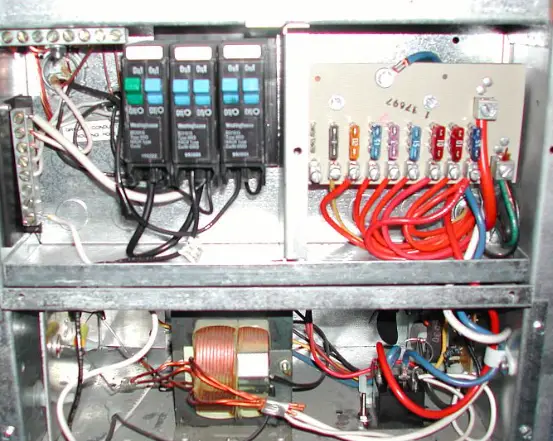
Testing an RV converter is an important step in diagnosing any issues with your RV’s electrical system. Here are the steps to follow when testing an RV converter:
Step 1: Test Your 120V AC Terminals or Transformer
To test the 120V AC terminals or transformer, use a multimeter to check for voltage. Turn off all appliances and disconnect the RV from any external power sources. Then, connect the multimeter to the 120V AC terminals or transformer. If the multimeter shows a reading of 120V AC, the terminals or transformer are working properly.
Step 2: Test Your Coach Battery Terminals
To test the coach battery terminals, use a multimeter to check for voltage. Turn off all appliances and disconnect the RV from any external power sources. Then, connect the multimeter to the coach battery terminals. If the multimeter shows a reading of 12V DC, the coach battery terminals are working properly.
Step 3: Test Your DC Batteries
To test the DC batteries, use a multimeter to check for voltage. Turn off all appliances and disconnect the RV from any external power sources. Then, connect the multimeter to the DC batteries. If the multimeter shows a reading of 12V DC, the DC batteries are working properly.
Step 4: Test The 12V Outputs
To test the 12V outputs, use a multimeter to check for voltage. Turn off all appliances and disconnect the RV from any external power sources. Then, connect the multimeter to the 12V outputs. If the multimeter shows a reading of 12V DC, the 12V outputs are working properly.
Step 5: Test The Solenoid or Transfer Relay Switch
To test the solenoid or transfer relay switch, use a multimeter to check for continuity. Turn off all appliances and disconnect the RV from any external power sources. Then, connect the multimeter to the solenoid or transfer relay switch. If the multimeter shows continuity, the solenoid or transfer relay switch is working properly.
By following these steps, you can determine whether your RV converter is working properly or needs to be replaced.
Signs of a Bad RV Converter
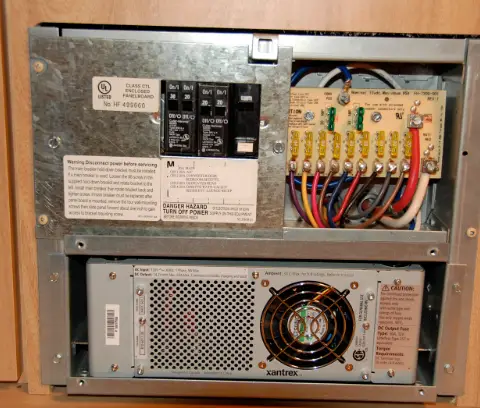
When an RV converter goes bad, it can cause a variety of issues with the RV’s electrical system. Here are some common warning signs to look out for:
Impact on RV Batteries
One of the most noticeable signs of a bad RV converter is a decrease in the lifespan of the RV’s batteries. The converter is responsible for charging the batteries when the RV is plugged into shore power. If the converter is not functioning properly, it may not be providing enough charge to the batteries, causing them to drain quickly or not hold a charge at all.
Effect on RV Appliances
Another sign of a bad RV converter is issues with the RV’s appliances. When the converter is not working correctly, it can cause flickering lights or a decrease in the voltage available to power the appliances. This can cause the appliances to work improperly or not work at all.
In addition, a bad converter can cause the temperature to rise in the RV’s electrical system. This can cause the converter fan to work harder to try and cool down the system. If the converter fan is not working properly, it can cause the converter to overheat, which can lead to further issues.
It’s important to address any signs of a bad RV converter as soon as possible to prevent further damage to the RV’s electrical system. Troubleshooting the converter can be done with a multimeter to check the voltage output, or by checking for any overheating or damage to the converter itself.
Overall, being aware of the warning signs of a bad RV converter can help RV owners identify and address any issues before they become more serious.
Why Is My RV Converter Not Charging Batteries? Top 7 Reasons
When the RV converter is not charging the batteries, it can be frustrating and confusing for RV owners. Here are the top 7 reasons why an RV converter may not be charging batteries:
Corroded Battery Connections
Corrosion on the battery posts and connections can prevent the RV converter from charging the batteries. To fix this issue, disconnect the battery clamps from the terminals and clean off any greenish or white corrosion on the connectors using a wire brush.
The RV Batteries Can’t Hold A Charge
If the RV batteries are losing their ability to hold a charge, the RV converter will not be able to charge them. In this case, the batteries may need to be replaced.
The RV Converter Thermal Sensor Has a Problem
If the RV converter’s thermal sensor is not functioning correctly, it may not be able to charge the batteries. This issue can be fixed by replacing the thermal sensor.
The RV Converter Cooling Fan Has Failed
If the RV converter’s cooling fan is not working correctly, it can cause the converter to overheat and stop charging the batteries. Replacing the cooling fan can solve this issue.
Diode Or Circuit Board Component Issue
A failed diode or other circuit board component can also cause the RV converter to stop charging the batteries. Replacing the faulty component can fix the issue.
The Circuit Board Is Corroded
Corrosion on the RV converter’s circuit board can also cause it to stop charging the batteries. In this case, the circuit board may need to be replaced.
You Have a Fuse Or Circuit Breaker Problem
A blown fuse or tripped circuit breaker can cause the RV converter to stop charging the batteries. Checking and replacing the fuse or resetting the circuit breaker can solve this issue.
RV Converter Troubleshooting: Try These Steps
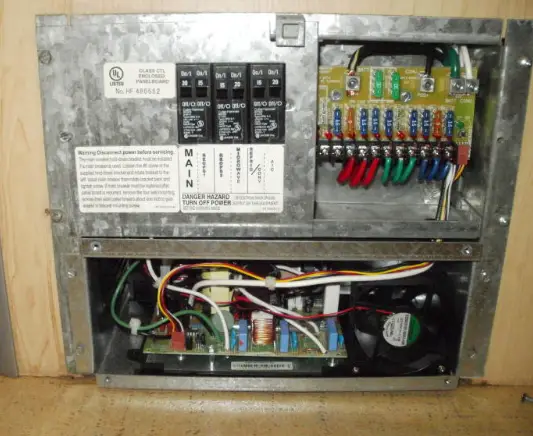
When an RV converter goes bad, it can be frustrating and inconvenient. However, there are a few troubleshooting steps that can be taken to identify and potentially fix the issue. Here are five options to try:
Option 1: Check The Battery On The Monitor Panel
The first step is to check the battery on the monitor panel. If the battery is low, it may be the cause of the issue. In this case, the converter may not be receiving enough power to function properly. If this is the case, the battery may need to be charged or replaced.
Option 2: Check The Circuit Breakers
Another step is to check the circuit breakers. If the circuit breaker for the converter has tripped, it may be the cause of the issue. In this case, the breaker will need to be reset.
Option 3: Check For Blown Fuses
Blown fuses can also cause issues with the RV converter. Check the fuses in the converter to see if any have blown. If a fuse is blown, it will need to be replaced.
Option 4: Check The RV Converter’s Cooling Fan
The RV converter’s cooling fan is an essential component that helps keep the converter from overheating. If the fan isn’t working correctly, it can cause the converter to malfunction. Check the fan to make sure it’s spinning properly and that it isn’t clogged with debris.
Option 5: Check The Converter’s Circuit Board and Resistors
If all else fails, it may be necessary to check the converter’s circuit board and resistors. If there is damage or corrosion on the circuit board or resistors, it can cause the converter to malfunction. In this case, the damaged component will need to be replaced.
By following these troubleshooting steps, it’s possible to identify and potentially fix issues with the RV converter. However, if the issue persists, it may be necessary to seek professional assistance.
Maintaining the RV Converter
To prevent the RV converter from going bad, regular maintenance is crucial. Here are some tips to maintain the RV converter:
- Keep the converter clean and free from dust and debris. Use compressed air to blow out any dust that may have accumulated inside the converter.
- Check the converter fan regularly to ensure that it is working correctly. A faulty converter fan can cause the converter to overheat, leading to damage.
- Test the converter’s temperature sensor periodically to ensure that it is working correctly. A faulty temperature sensor can cause the converter to overheat and fail.
- Keep the converter away from heat sources. The converter should be installed in a well-ventilated area to prevent overheating.
- Ensure that the converter is not overloaded. Overloading can cause the converter to overheat and fail. Check the converter’s specifications and ensure that it can handle the load of all the appliances and devices in the RV.
- Regularly check the RV batteries and ensure that they are fully charged. A bad battery can cause the converter to fail.
By following these maintenance tips, RV owners can prevent the converter from going bad and ensure that it functions correctly. If the converter does fail, troubleshooting the converter can help identify the problem and fix it.
Dealing with Overheating
When an RV converter overheats, it can cause serious damage to the system. It’s important to take steps to prevent overheating and deal with it quickly if it does occur.
One of the main causes of overheating in an RV converter is a malfunctioning cooling fan. The cooling fan helps to regulate the temperature of the converter by drawing in cool air and expelling hot air. If the cooling fan is not working properly, the converter can quickly overheat.
To prevent overheating due to a malfunctioning cooling fan, it is important to regularly check and clean the fan. If the fan is clogged with dirt or debris, it will not be able to draw in enough cool air to regulate the temperature of the converter. In some cases, the fan may need to be replaced if it is damaged or worn out.
Another cause of overheating in an RV converter is a malfunctioning thermostat. The thermostat helps to regulate the temperature of the converter by turning the cooling fan on and off as needed. If the thermostat is not working properly, the cooling fan may not turn on when it should, leading to overheating.
To prevent overheating due to a malfunctioning thermostat, it is important to regularly check and replace the thermostat if necessary. It is also a good idea to keep the thermostat clean and free of dirt and debris.

